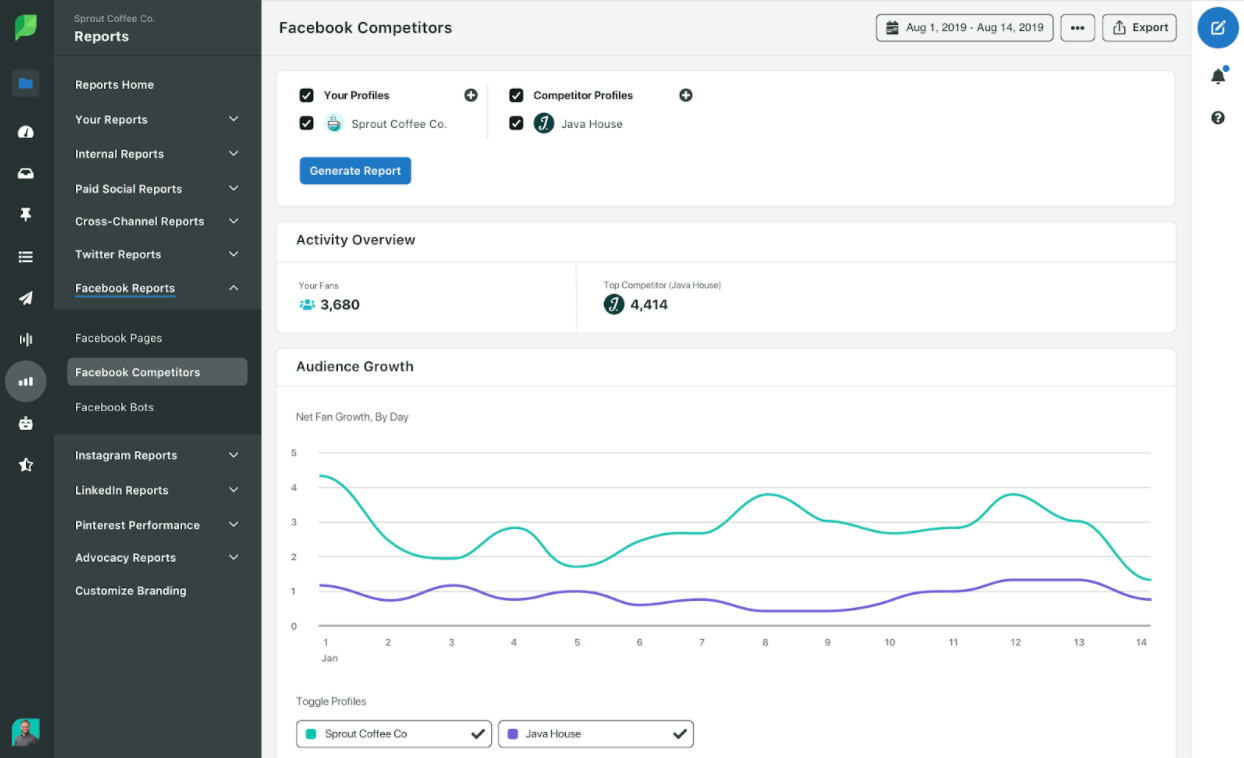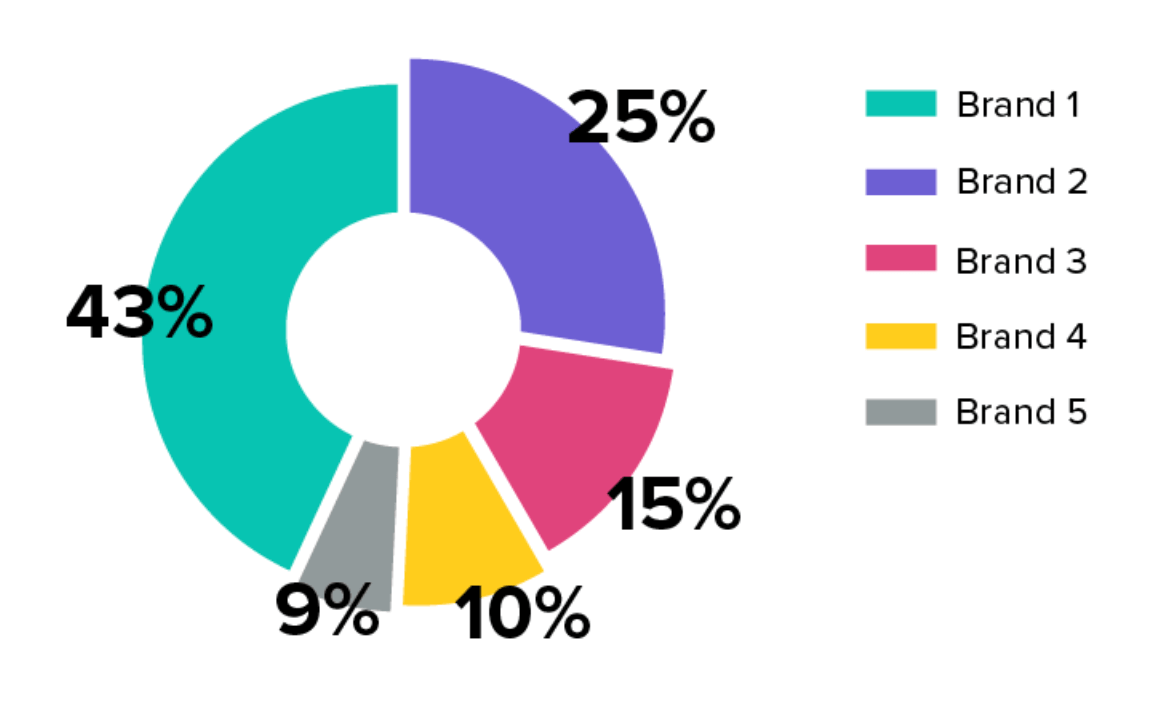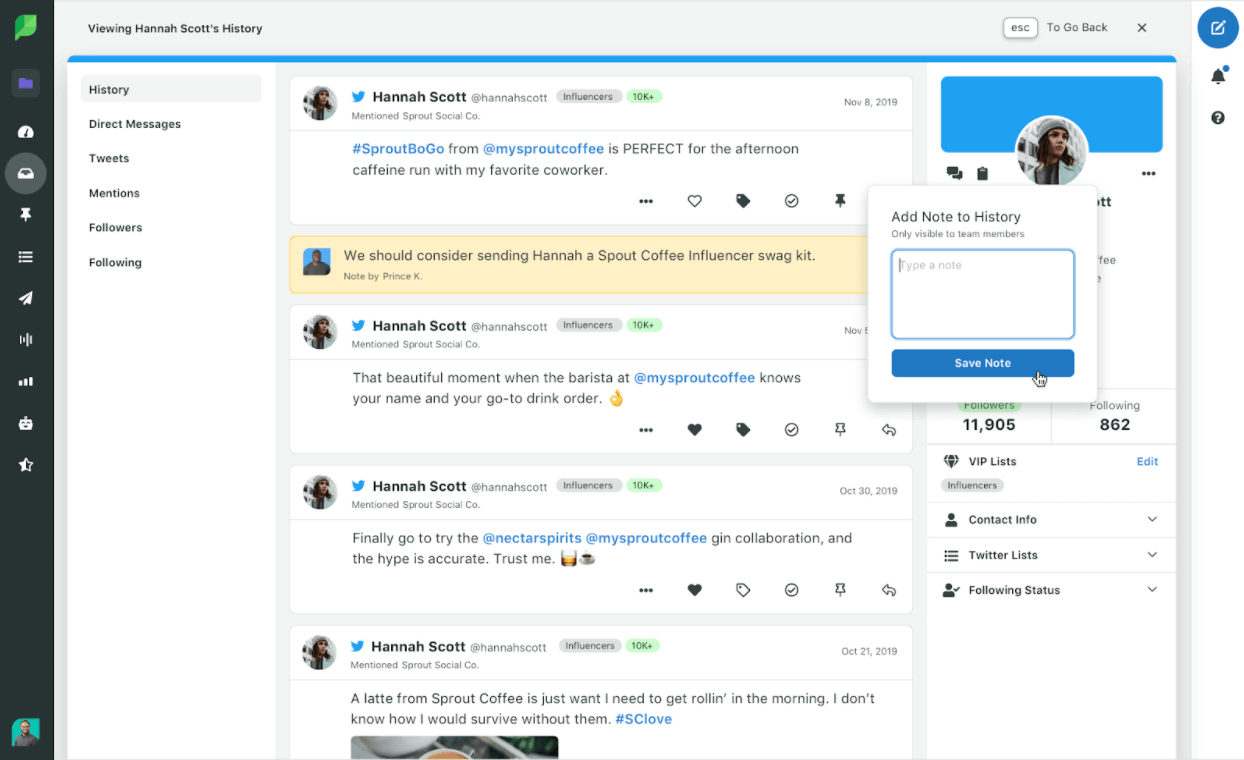 Research Intelligence
Research Intelligence
5 Competitive Benchmark Tactics to Measure Your Brand on Social Web

You’ve surely wondered how your brand’s social authority stacks up against your competitors. However, if you’re merely using your follower count as the yardstick, you’re not doing it right.
While these high-level engagement metrics are important to look at, they don’t reveal the complete picture of your brand’s social presence.
For instance, if you’re a small up-and-coming shoe brand, comparing your Instagram presence in terms of followers to the likes of Nike or Adidas would be of little significance. Instead, to accurately measure your brand’s social presence, you must take into account tried and true metrics that actually make sense.
That’s where competitive benchmarking comes in. By conducting an extensive analysis, you can better understand your strengths and weaknesses in comparison to the competition, which will allow you to improve and stand out from your competitors.
While there are many benchmarking tactics you can employ, let’s take a look at the five most crucial ones that should always be taken into account.
1. Engagement Rate
The number of followers on your blog or social media profiles is important, but it is not the overriding factor of your brand’s social authority.
Your brand’s engagement rate is of far greater importance as a competitive benchmark than your follower count. Simply put, engagement rate pits your follower count against how many likes, shares, retweets, or comments that your social content aggregates.
A brand with 500 engaged, active followers is much more valuable than a brand with 5,000 followers that don’t care about what’s being posted. Those 500 engaged followers are much more likely to convert into paying customers, become brand advocates that spread positive word-of-mouth, and bring in real ROI on your investment in content.
A huge follower count may appear impressive but is entirely useless if it is not bringing in more business. As such, look beyond your competitors’ follower counts to see how frequently their followers actually engage with the content.
2. Growth Rate
Needless to say, you want to continually grow your active follower base and overall brand authority on social media. If you consistently post and engage with your social media followers, your presence will likely grow, as long as your content is engaging.
A good question to ask is as follows: For all your efforts, how much are you actually growing? As a competitive benchmark, growth rate analyzes how much your following has grown in a certain period of time.
For instance, you may have 100 comments on one of your posts on Instagram, which may be a huge number for you but an everyday occurrence for the biggest brands in your space.
However, if the number of comments on your posts keeps increasing and reaches an average of 100 per post in 3 months’ time, while your competitors remain stagnant at 100, then your growth rate is far more impressive. It shows that people are starting to prefer your content to theirs and that you’re on the right track to surpass them.
You can use a tool like Sprout Social to monitor your growth rate over time alongside your competition. In doing so, you can see if certain social campaigns are more effective than others, and, similarly, if your competitors ran a campaign that totally stole the show.
3. Share of Voice
Whether you’re an industry leader or a budding underdog, and regardless of which niche you’re in, you’re likely jostling for market share in your domain.
Share of voice is a competitive benchmark that gauges how much your brand’s voice or messaging is being heard against competing brands on social media.
By boosting your share of voice, you contribute more (and more meaningfully) to your industry’s conversation. This means posting useful content frequently, engaging with your audience, and taking a stance to address the issues facing your industry.
For instance, are you blazing a trail with the latest hashtags in your industry and taking a stand? Or are you watching from the sidelines when it comes to controversy in your space? At the end of the day, you can’t expect your brand to be heard if you don’t focus on improving your share of voice.
4. Social Mentions
Users are always talking about brands across the social web, whether it be on social media platforms like Facebook and Twitter, Q&A forums like Quora and Reddit, or business review platforms like Yelp and Trustpilot. Earning social mentions, preferably in a positive light, is one of the most important branding goals for any modern business.
You want to be able to capitalize on those conversations and moments to create equity. For that, you must first know who’s talking about you and your competitors. That’s why social listening is crucial when monitoring competitive benchmarks.
Furthermore, not all social mentions are created equal — scoring a shoutout from a major influencer in your industry serves as a powerful piece of social proof for your brand. Dig for the influencers that are working with your top competitors and try to pull similar engagement from them for your brand.
Your ability to track, measure, and respond to social mentions in real time will show that you’re an active participant in your industry and will also help build your brand.
Again, using social listening and benchmarking tools like Mention or Sprout Social enables you to keep track of your business across the social web. Of course, you can’t please everyone on the internet (or in life for that matter). However, you can strive to have control over your social feed and deal with both positive and negative mentions in a courteous and timely manner.
5. Sentiment Analysis
There’s more to online branding than being the loudest voice in the room. Contrary to the popular saying that there’s no such thing as bad press, for social media, not all press is good press. Sentiment analysis measures whether your brand mentions are positive, negative, or neutral in the eyes of your audience.
Sentiment analysis is particularly critical if you’re laser-focused on customer satisfaction and retention. If you invoke the right sentiments and strike a chord with your audience, you will appear as the best option in contrast to your competitors.
Thus, using the social monitoring tools mentioned above, sentiment analysis should most definitely be a part of your social branding strategy.
Final Thoughts
Proper competitor benchmarking enables you to truly understand how you stack up against your competitors on social media. To build the best social presence possible for your brand, it is imperative that you take a data-driven approach.
Conducting a competitive benchmarking analysis with the tactics discussed above has been a game-changer for brands that were previously focused on little more than their number of likes.
If you’re ready to achieve better ROI from social and take your branding to the next level, these are the metrics that deserve your wholehearted attention. With the right benchmarking tools, you can quickly start approaching your social media more efficiently and achieve faster growth.
Benchmark like a boss with fresh competitive data
Contact us to set up a call with a market research specialist










